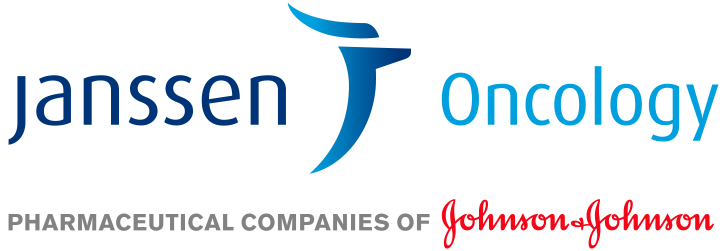The Janssen Pharmaceutical Companies of Johnson & Johnson has announced preliminary results from the Phase 1b CHRYSALIS-2 (NCT04077463) study evaluating amivantamab in combination with lazertinib in the treatment of patients with non-small cell lung cancer (NSCLC) characterised by epidermal growth factor receptor (EGFR) exon 19 deletion or L858R mutations whose disease had progressed after treatment with osimertinib and platinum chemotherapy.
While previously reported results have demonstrated durable responses with amivantamab in combination with lazertinib in chemotherapy-naïve patients previously treated with osimertinib, these new data suggest that intervening chemotherapy does not impact activity with the combination.
These data were featured for the first time in a mini-oral presentation at the European Society for Medical Oncology (ESMO) Annual Congress 2021 virtual meeting on Sunday, September 19 (Abstract #1193MO).
“Patients with non-small cell lung cancer whose disease has progressed despite receiving standard of care treatments have a tremendous need for additional treatment options,” said Catherine A. Shu, M.D., Clinical Director of the Thoracic Medical Oncology Service, Columbia University Herbert Irving Comprehensive Cancer Center, and presenting study investigator.
“We are encouraged by these data showing that the combination of amivantamab and Lazertinib elicited antitumour activity, even in a heavily pre-treated patient population.”
In Cohort A of the CHRYSALIS-2 study, patients with NSCLC with EGFR exon 19 deletion or L858R mutations whose disease had progressed after treatment with osimertinib and platinum chemotherapy received the recommended combination dose of amivantamab at 1050/1400 mg as an intravenous (IV) infusion and oral lazertinib at 240 mg.
The study also included a heavily pre-treated population (n=56), who received platinum-based chemotherapy, osimertinib and other therapies, with no prespecified number or sequence of prior treatment. A protocol amendment created a target population (n=80), which specified progression on osimertinib and platinum-based chemotherapy, in that order.1
The efficacy data presented are by investigator-assessed response per Response Evaluation Criteria in Solid Tumors Version 1.1 (RECIST v1.1) in patients that had undergone at least two post-baseline disease assessments.
Of the 29 efficacy-evaluable patients within the target population (n= 80) at a median follow-up of 4.6 months (range; 0.4-9.6), the overall response rate (ORR) was 41 percent (95 percent confidence interval [CI]; 24 – 61).
The clinical benefit rate (CBR), which consisted of complete response, partial response (PR) or stable disease at 11 weeks or longer, was 69 percent (95 percent CI; 49 – 85).1 Eight out of 12 patients who responded are ongoing and remain on treatment and five out of 12 patients with stable disease remain on treatment (longest at 6.9+ months).
In the population of heavily pre-treated patients (n=56), among the 47 efficacy-evaluable patients at median follow-up of 4.5 months (range; 0.3 – 9.7), ORR was 21 percent (95 percent CI; 11 – 36), with a CBR of 51 percent (95 percent CI; 36 – 66). The median time on treatment was 3.7 months (range; 0.03 – 9.7) and 10 out of 10 patients who responded remain on treatment.
Ten out of 26 patients with stable disease remain on treatment (longest at 9.6+ months). Additionally, responses were observed early with a median time to first confirmed response of 1.5 months (range; 1.3–4.2).
The safety profile with the combination was consistent with previously reported amivantamab and lazertinib results at the recommended combination dose, and no new safety signals were identified.
The majority of treatment-emergent adverse events (AEs) were Grade 1-2.1Treatment-emergent Grade ≥3 AEs were infusion-related reaction (9 percent), dyspnoea (6percent), acneiform dermatitis (4 percent), hypoalbuminaemia (4 percent), paronychia (3percent), increased alanine aminotransferase (3 percent), rash (2 percent), stomatitis (2percent), asthenia (2 percent), nausea (2 percent), increased aspartate aminotransferase (2percent), fatigue (2 percent), peripheral oedema (1 percent), thrombocytopenia (1 percent), decreased appetite (1 percent) and pruritus (1 percent).
“Lung cancer remains Europe’s biggest cancer killer with almost half a million new diagnoses in 2020. While great strides have been made in treatment terms, only 11 percent of people live beyond 5 years after receiving a NSCLC diagnosis. We are encouraged by these data showing the potential of amivantamab and lazertinib combination therapy for non-small cell lung cancer and what this means for the patient population” said Dr Catherine Taylor, Vice President, Medical Affairs for Europe, Middle East and Africa, Therapeutic Area Strategy, Jan-Cil Zug.
“At Janssen, we are committed to driving innovation that can help address this unmet need, raise patient expectations and improve outcomes across the region.”


